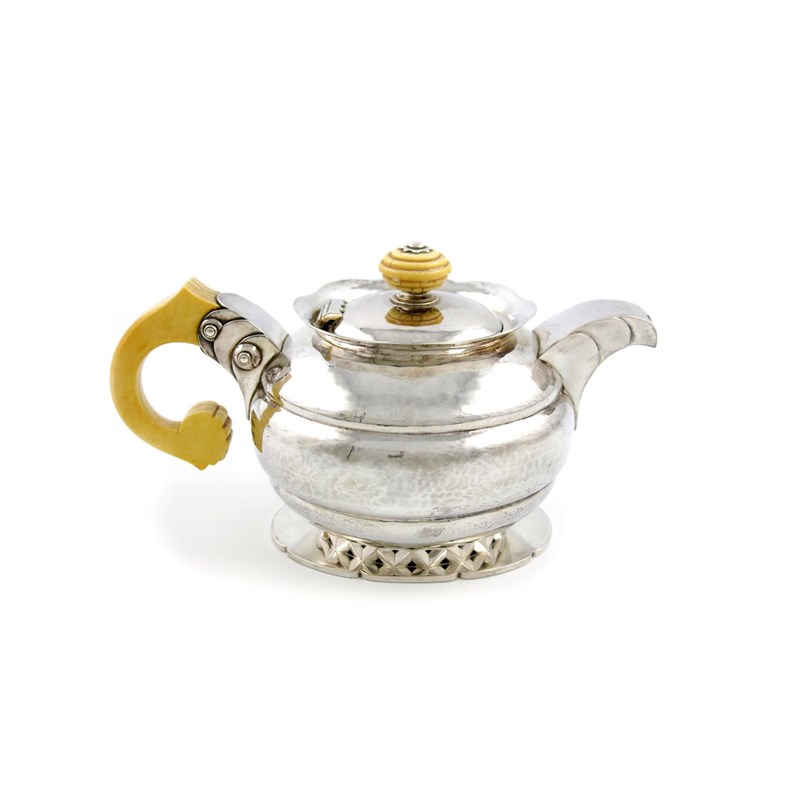Fine Silver & Objects of Vertu - 25 Apr 2018
λBy H.G. Murphy
λBy H.G. Murphy, a silver and ivory Art Deco tea pot,
London 1930, also with the Falcon Studio mark,
in the French manner, circular form, spot hammered decoration, carved ivory scroll handle and finial, on a pierced shaped oval foot, length handle to spout 21.3cm, approx. weight 23.8oz.
Provenance: H.G. Murphy (1884-1939), and thence by descent to the present owner.
illustrated in Atterbury, P., and Benjamin, J., The Jewellery and Silver of H.G. Murphy, Antique Collectors' Club, 2005, page 81.
H.G. Murphy was born in Birchington-on-Sea in Kent on 27th October, 1884. His father, a groom, died when Harry was only six and the family was obliged to seek lodgings in London, where they settled in premises located just off Kensington Church Street.
A shy and introspective boy, Harry was largely self-taught and spent much of his spare time in the local library where, according to family tradition, he devoured Encyclopaedia Britannica from cover to cover firing a lifelong passion for many of the subjects which were to influence his designs including botany, astronomy, astrology and zoology.
At the age of 14, a chance meeting at a local Arts and Crafts exhibition was to have a radical bearing on Harry's life and career. While admiring the silverware on display he fell into conversation with Henry Wilson, the celebrated designer and craftsman who, clearly impressed by the boy's enthusiasm, offered Harry a six-year apprenticeship at his studio in Kensington. Wilson was probably England's greatest teacher and mentor of young talent in the Arts and Crafts tradition and by the end of his apprenticeship Harry had mastered many of the skills necessary to be a highly competent goldsmith and silversmith, such as hammering, engraving, gem polishing, gem setting, niello work and enamelling. Unsurprisingly, much of his output before and after the First World War was strongly influenced by nature and naturalism and it was not until the 1920s that he started to experiment with a range of different ideas and concepts.
In 1928, Harry Murphy established retail premises in Marylebone called the Falcon Studio. By the early 1930s, his output was prodigious encompassing silver commissions from City institutions, churches, schools and sporting associations as well as small-scale jewellery in silver and gold, such as a splendid topaz, sapphire, diamond and polychrome enamel tiara designed and made for the Princess Royal. The Falcon studio prospered through the late 1930s but Murphy's health had begun to deteriorate. In 1938 he received the award of Royal Designer for Industry (RDI) from The Duke of Gloucester and Harry was appointed the Faculty's First Master. He died on 10th July, 1939, at the tragically young age of 54.





 Live online bidding is available via our own
Live online bidding is available via our own